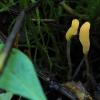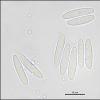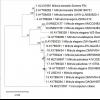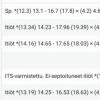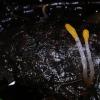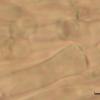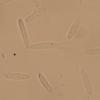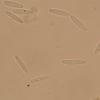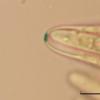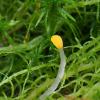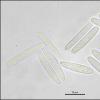
28-10-2025 19:33
 Nicolas Suberbielle
Nicolas Suberbielle
Bonjour à tous,Je voudrais votre avis sur cette r

28-10-2025 15:37
Carl FarmerI'd be grateful for any suggestions for this strik

28-10-2025 11:29
 Tanja Böhning
Tanja Böhning
Hello, I found this very small (ca 0,5mm) yellow

27-10-2025 00:34
 Francois Guay
Francois Guay
I found this strange species in Québec,Canada, gr

27-10-2025 15:29
 Michel Hairaud
Michel Hairaud
Bonjour à tous, Avec Elisabeth Stöckli nous avo

26-10-2025 13:39
Joaquin MartinHi,I found this fungus in a mixed forest of spruce

26-10-2025 21:23
Juuso ÄikäsHello, a couple weeks ago I found some pale, whit
Spore measurements:
(13.5) 14.6 - 17.6 (18.1) × (2.8) 3.2 - 4 (4.2) µm
Q = (3.4) 3.9 - 5.3 (5.8) ; N = 20
Me = 15.9 × 3.6 µm ; Qe = 4.5
The old paper The genus Mitrula in North America (1977) doesn't seem to clearly key out this specimen. Either this is M. paludosa or M. borealis. The spore measurements would fit M. borealis slightly better, but the spores didn't appear to have a sheath (fresh spore deposit), which might favour M. paludosa.
Any opinions?

Mitrula borealis seems to be very common in SW Finland, perhaps more so than M. paludosa. Some of my observations are recorded here, but I have many more:
https://laji.fi/observation/list?target=mitrula%20borealis
A few weeks ago I collected a Mitrula with spores even broader than borealis according to the Redhead paper. I don't know is it a borealis or still a new one.

About macroscopic differences I am not sure but the working hypothesis is that borealis is more yellow and perhaps bigger. Paludosa might have more brownish tints in the hymenium and pehaps not so elongated hymenial head as borealis.
Likewise, about ecology I have only a working hypothesis: borealis might be more common in spring fed small streams or pools while paludosa is found in any pool or ditch. All acid, virtually no calacreous sites where I collect.
The sequenced one is this:


interesting topic! I must admit I have automatically identified all my Czech collections as M. paludosa. In Czech literature, I haven´t found a mention about M. borealis, but I can see that Redhead mentions occurrence in the neighbouring Germany.
I wonder how often is M. borealis collected in this region...
Yesterday I found Mitrula in the Jeseníky Mts., so I made the first microscopy of it in my life, and it fits better M. paludosa, especially if Redhead worked with dead material. In any case, the are thinner than those in the collections from Finland presented here. Living ascospores measure (13)14.1-18.2(19.2) × (2.8)3-3.6 (3.8) µm, Q = (3.8)4.2-5.6(6.2), n = 40. Me = 15.8 × 3.3 µm; Qe = 4.8. Gelatinous sheath not observed.
Best regards, Zuzana


Spores:
(17.3) 18.1 - 21.3 (22.9) × (2.8) 3 - 3.5 (3.8) µm
Q = (4.6) 5.4 - 6.7 (6.8) ; N = 20
Me = 19.6 × 3.3 µm ; Qe = 6


